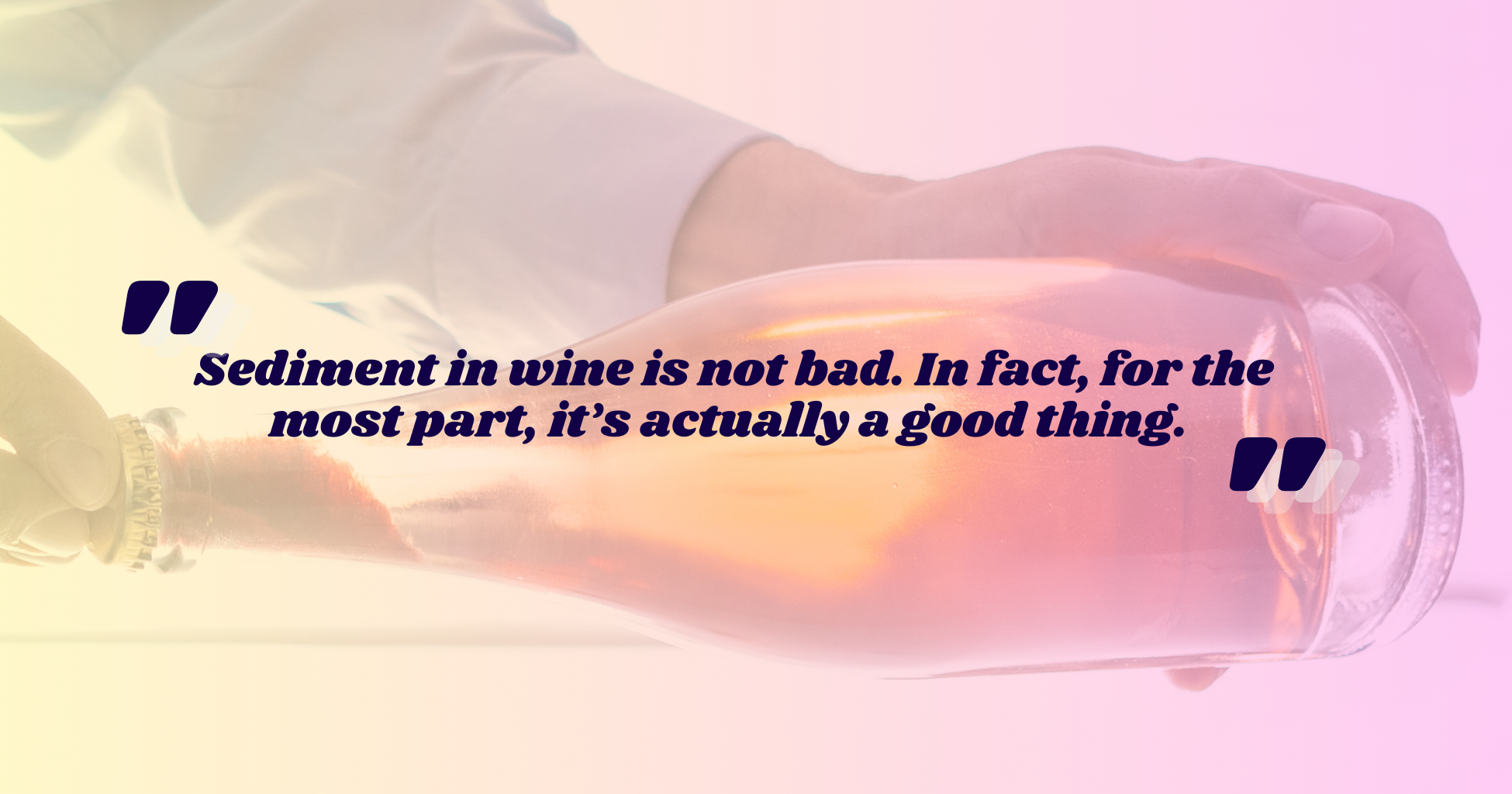What is sediment in wine? Where does sediment in wine come from? And, can I drink the sediment in my wine?
Sediment in wine can come from several different sources, and it’s as safe to drink* as the rest of your wine is. In fact, sediment in wine can often signal a lower-intervention wine or a natural wine, as ensuring that a wine definitively has no sediment requires additional, unnatural intervention. Sediment in wine typically comes from one of three sources: natural tartrate crystals, yeast, or anthocyanins.
Natural tartrate crystals are a byproduct of winemaking as a result of fermentation. Both tartaric acid and potassium are naturally present in grape juice, and these two compounds tend to bind during the fermentation process resulting in the presence of these “wine diamonds” as they’re colloquially known. Commercial wineries remove these via a process known as cold stabilization, whereby you chill the wine significantly for some period of time until all the crystals form and drop to the bottom of the tank. From there, they get scooped out. There are other even more interventionist methods to remove these tartrates from a bottle of wine. We at unPINNED tend not to like those.
Yeast or lees is another source of sediment in a wine bottle. These tend to be present in low-intervention and natural wines, which are often lightly filtered or not filtered at all. Filtering lives on a spectrum based on how fine the mesh is, measured typically in microns. The finer the mesh, i.e. the smaller the pores through which the wine passes, the more “filtered” the wine is, and the less stuff there will be in the wine. Keep in mind that “stuff” in wine is often what gives wine flavor. We don’t dislike “stuff” in wine. Yeast is one of the most crucial pieces to the winemaking puzzle (for more on this, you can sign up for the unPINNED Wine Course), and once fermentation is complete, it doesn’t just disappear. It’s either filtered out or it’s left in the wine. When it’s left in the wine, it will be a soot-like sediment that rests in accordance with gravity — either at the bottom of the bottle if stored standing or along the side of the bottle, if rested flat. When opening/pouring the wine, if you do so gently, the sediment will mostly continue to rest at the bottom up until you get towards the end of the bottle. Otherwise, you can mix the sediment in. Either way, the particles are so small that you won’t perceive any difference in the feel of the wine — it’s almost purely an optical thing. That sediment, by the way, is effectively natural probiotics*.
Anthocyanins are the color compound found in the skins of grapes. For wines that have been made with significant skin contact (red or orange wines) and that have been aged for some years, sometimes, the color compound will start to fall out of solution. This is what’s responsible for longer-aged red wines to appear less saturated in color than their younger counterparts. There’s a separate, contemporaneous phenomenon of oxidation, which causes browning in wines that have been aged. Given that both these processes are happening simultaneously, it can be difficult sometimes to observe just one of these phenomena in a vacuum. Regardless, oxidation is not responsible for sediment, but anthocyanins dropping out of solution is.
Sediment in wine is not bad. In fact, for the most part, it’s actually a good thing. Keep that in mind the next time you judge a wine by its sediment!
*As always, we are not medical professionals, so appropriate disclaimer to seek advice from a medical professional if you have concerns or want actual medical or nutritional guidance.

